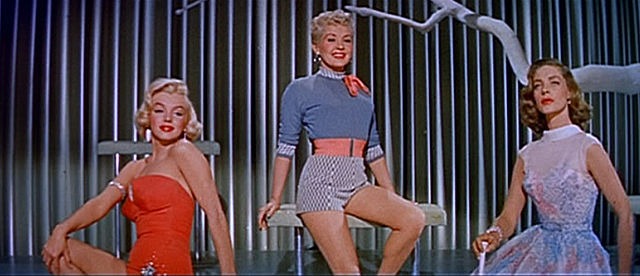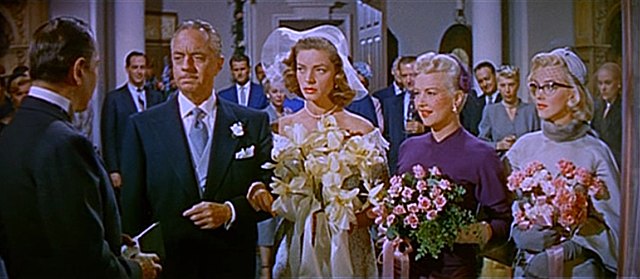When you first encountered CinemaScope, you likely didn’t realize the monumental shift it was causing in the film industry. By expanding the screen with its innovative anamorphic lenses, CinemaScope didn’t just make movies bigger; it transformed storytelling, allowing for more immersive and visually stunning experiences. Consider the impact of classics like ‘The Robe’ and ‘How to Marry a Millionaire’—they didn’t merely entertain; they captivated, setting a new standard for filmmakers worldwide.
Key Takeaways
- CinemaScope introduced anamorphic lenses, allowing for wider images on standard 35mm film, enhancing the visual experience.
- It popularized widescreen formats like 2.35:1 and 2.55:1, offering filmmakers a larger canvas for storytelling.
- Technological innovations, including the integration of magnetic soundtracks, improved the immersive aspect of movie-watching.
- CinemaScope influenced the adoption of widescreen formats across the industry, leading to the development of rival processes.
- The use of CinemaScope techniques continues to impact modern cinema, setting the standard for visual storytelling and audience immersion.
The Dawn of Cinemascope
In 1953, 20th Century Fox introduced CinemaScope, a groundbreaking widescreen filmmaking process that countered the growing popularity of television by transforming movie experiences. This innovative technique utilized anamorphic lenses to squeeze a wide image onto standard 35mm film, dramatically altering the aspect ratio. Suddenly, films had a visual breadth that was impossible on the small screen, immersing audiences in a spectacle that only the cinema could provide.
The aspect ratios of 2.55:1 and later 2.35:1 became hallmarks of CinemaScope, offering a panoramic view that enveloped viewers. Early films like “The Robe” and “How to Marry a Millionaire” not only showcased the technical prowess of CinemaScope but also its storytelling potential. The widescreen format allowed directors to craft more dynamic scenes, with the expanded visual field enhancing the narrative depth and emotional impact of the movies.
20th Century Fox’s bold move paid off, setting a new standard for visual storytelling. The introduction of the Bausch & Lomb CinemaScope lens further refined image quality, ensuring that widescreen films were not just a novelty but a pivotal evolution in cinema. In doing so, CinemaScope redefined the movie-going experience, emphasizing the unique visual impact that only films could offer.
Technological Innovations
Building on the widescreen marvel of CinemaScope, technological advancements further transformed how movies were made and experienced. The introduction of anamorphic lenses by Bausch & Lomb was a game-changer, allowing film to stretch beyond traditional bounds into widescreen formats like 2.55:1 and 2.35:1. This wasn’t just about making the picture wider; it was about immersing you deeper into the story, making every scene more enthralling.
CinemaScope’s leap didn’t stop with the visual. The integration of magnetic soundtracks adjusted the image aspect ratio, turning mere watching into an immersive experience. You weren’t just seeing a wider world; you were enveloped in its sounds, making every moment in the theater more engrossing.
What’s more, CinemaScope ensured that this new era of film could be embraced without overhauling existing theater equipment. This adaptability spurred technological innovations across the industry, influencing rival processes like VistaVision and Techniscope to step up their game. Suddenly, every film had the potential to be a widescreen wonder, transforming the way stories were told and experienced.
Impact on Filmmaking
CinemaScope’s introduction dramatically altered the landscape of filmmaking, ushering in a new era of visual storytelling that captivated audiences worldwide. With a 63% increase in negative area over standard aspect ratios, Cinemascope offered filmmakers a grand canvas to craft their narratives. The anamorphic lens was key, providing optical compression to achieve widescreen visuals with aspect ratios like 2.35:1, unheard of at the time.
Films like ‘The Robe’ and ‘How to Marry a Millionaire’ were among the first to showcase the visual impact of widescreen storytelling. These movies didn’t just look different; they felt different, drawing viewers into a more immersive experience. However, this innovation wasn’t without its challenges. Directors and cinematographers had to rethink composition and framing, as the wider aspect ratio required adjustments to accommodate the expanded visual field.
Cinemascope’s legacy is undeniable. It pushed major studios to embrace widescreen formats, forever changing the way stories are told on the big screen. The visual impact, combined with innovative framing and composition techniques, has cemented Cinemascope’s place in filmmaking history. This shift wasn’t just about bigger screens; it was about broader storytelling possibilities, enhancing the cinematic experience for everyone.
Global Cinematic Influence
CinemaScope often changed the way you watch movies, making every scene a grand, immersive experience that crosses borders and cultures. When Bausch & Lomb crafted those innovative lenses, they didn’t just enhance image quality; they redefined visual storytelling. Suddenly, directors could sweep you off to vast landscapes and bustling cityscapes, all without leaving your seat. This wasn’t just a novelty—it was a revolution.
20th Century Fox led the charge, rolling out films like ‘The Robe’ and ‘How to Marry a Millionaire.’ These weren’t just movies; they were widescreen spectacles that showed off what CinemaScope could do. It wasn’t long before the rest of the film industry caught on. Studios around the globe started adopting widescreen formats, tweaking aspect ratios to meet audience preferences that were rapidly evolving.
This global influence of CinemaScope has shaped contemporary cinema in ways you’re still enjoying today. From the epic to the intimate, filmmakers worldwide use the techniques pioneered by CinemaScope to tell stories that captivate, entertain, and immerse. It’s not just a part of movie history; it’s a vibrant, living legacy that continues to influence the films you love.
Legacy and Evolution
Often, the most profound legacies shape the future quietly, and that’s exactly what CinemaScope has done for widescreen filmmaking. This revolutionary technology didn’t just alter how movies were made; it transformed the very essence of visual storytelling, ushering in an era of widescreen processes that continue to evolve today.
Here’s how CinemaScope’s legacy lives on:
- CinemaScope lenses set the standard for modern anamorphic film techniques, enabling wider aspect ratios without compromising quality.
- Its influence spurred the creation and adoption of rival widescreen processes like VistaVision and Techniscope.
- Studios quickly adapted their filming techniques and aspect ratios, embracing the widescreen format for a more immersive viewing experience.
- The widescreen format, popularized by CinemaScope, is now a foundational aspect of film production, impacting everything from blockbuster epics to indie darlings.
- CinemaScope’s ability to use existing theatre equipment for widescreen films revolutionized the movie-watching experience, laying the groundwork for the cinematic innovations that followed.
The evolution of widescreen filmmaking owes much to CinemaScope’s groundbreaking approach. Its legacy is a demonstration of the power of innovation in shaping the future of visual storytelling.
Frequently Asked Questions
How Did Cinemascope Change Cinema?
Cinemascope changed cinema by bringing widescreen formats to combat TV’s rise, increasing visual space by 63% and enhancing storytelling. You’ll notice its legacy in today’s filmmaking techniques, shaping how directors approach visual composition.
Why Did Movies Change to Widescreen?
Movies shifted to widescreen to tackle TV’s growing popularity in the 1950s. You’d see a 63% bigger picture, making films more immersive and visually thrilling, drawing audiences back to the magic of theaters.
Why Does Widescreen Feel More Cinematic?
Widescreen feels more cinematic because it offers a broader view, making you feel immersed in the story. It allows for more detailed visuals and a grander scale, enhancing the movie-watching experience.
Why Did Cinemascope Fail?
It struggled because of optical issues like distortions in close-ups and ‘mumps,’ and faced stiff competition from formats like VistaVision. These limitations hampered its use, despite its pioneering role.
Conclusion
CinemaScope didn’t just change movies; it revolutionized them. By embracing widescreen, filmmakers got a bigger canvas, pulling you into stories like never before. From classics like ‘The Robe’ to today’s blockbusters, its impact is undeniable. Around the world, directors use its legacy to create visually stunning narratives, ensuring every frame is a work of art. CinemaScope’s influence is a proof of innovation, proving that with the right vision, the way we experience stories can be transformed forever.




